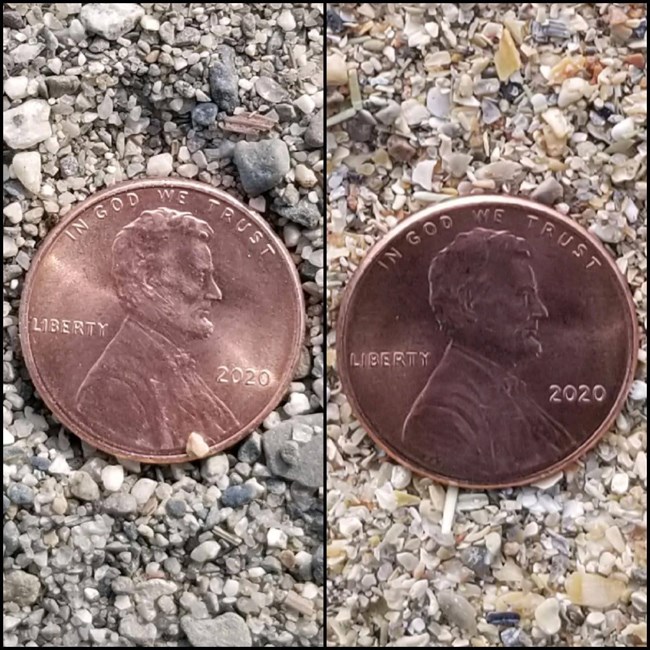Last updated: September 29, 2020
Article
The Geologic Story of Sand Beach

NPS / V. Stauffenberg
An abundance of shell-producing organisms
The waters of the region are home to an abundant community of creatures like barnacles and mussels that provide the shell material that makes up 70-80% of the material found on the beach. If you go out tidepooling during your visit, you can see some of this sea life for yourself!A south-facing cove
Because Newport Cove faces south, it is able to capture the prevailing summertime wave action, which approaches Mount Desert Island from the south and south-west. It is this wave action that carries shell material onto the beach.
NPS / J. Cosgrove
Lack of land-based sediments
Sand Beach does not receive much sediment from the island itself, such as eroding Cadillac granite, which allows the shell material to predominate on the beach itself. These photos show the difference between Sand Beach and Echo Lake Beach (a manmade beach on a freshwater lake). See if you can tell which is primarily broken shells and which is rounded rock grains!
Old Soaker
This small offshore rocky ledge (visible from Sand Beach or Great Head) helps break up the surf entering Newport Cove just enough to allow the finer sediments to accumulate and to prevent wave action from carrying those sediments away.
Beaches are dynamic places, constantly changing both daily and longer term. Acadia’s Sand Beach is experiencing long-term changes due to climate change and other factors.

NPS / S. Stalker
